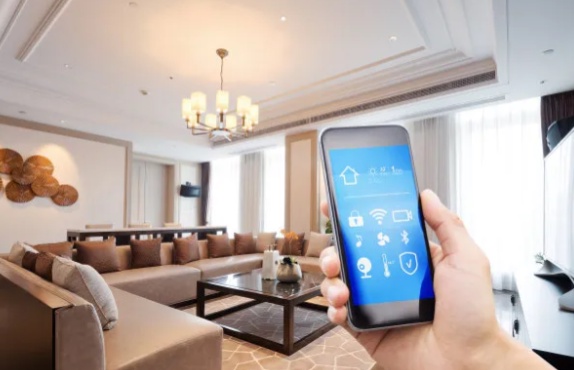AIoT (Intelligent Internet of Things) combines the Internet of Things (IoT) and artificial intelligence (AI) applied to IoT. It's one of the adaptations that we're trying to find.
The COVID-19 pandemic has wreaked havoc across the globe, making the past 24 months challenging. We need to accept this fact now and find ways to adapt to our lives and the world. In order to ensure people's safety, production and happy life, the government, industry and enterprises are constantly working hard to change the status quo.
AIoT (Intelligent Internet of Things) combines the Internet of Things (IoT) and artificial intelligence (AI) applied to IoT. It's one of the adaptations that we're trying to find.
The era demand of smart home
People have had to make changes in how and where they work. Working from home has become the norm. Businesses are happy to continue allowing employees to work remotely as long as employees remain productive. Working from home has caused people to re-examine the importance of work and the value of family. Discussions surrounding tech smart homes are more frequent than ever these days.
Smart home and related technologies are still a very young industry. We will see that many companies launch related products (including hardware and software) and complete solutions, and electronic engineers have discovered important market space and equipment-level problems. But it will still take time for smart homes to truly enter our homes on a large scale, affordably and safely.
Edge Computing Meets Safety and Efficiency
The more information a device needs, the smarter it is. Artificial intelligence has security risks due to its reliance on data. Local data processing can address privacy concerns. Families can reduce the risk of data leakage by keeping data within their own walls without sharing it with third parties in the cloud.
Smart home devices can be used to store data so that remote cybercriminals cannot easily steal information through the network transmission link. Device manufacturers must ensure that data processing on their devices is secure. When it comes to data and decisions, better security can be achieved by using various security features at the device level, such as secure key storage, accelerated encryption, and actual random number generation. Módulo CAN
Data connectivity is also a significant barrier to AI deployment. For example, when a monitoring device from a smart home detects an anomaly (such as a heart attack) a decision needs to be made quickly, and home medical monitoring cannot be hindered by a poor connection or even any network latency.
If the industry wants to develop applications that are immune to latency, it should turn to on-device edge computing. AIoT chips for product manufacturers can now perform in nanoseconds, enabling products to think quickly and make precise decisions.
Also need to pay attention to the issue of scale. The number of connected devices is increasing, which is putting more pressure on remote cloud infrastructure. Scale is one of the factors that have contributed to the big growth in edge technology over the past two years. Experts are beginning to recognize the inherent scalability benefits of IoT. Módulo de E/S remotas
What was once one of the major technical barriers to IoT expansion, the need for cloud processing to handle future billions of devices and petabytes of data, is being removed.
Unified standard AIoT development platform
Over the past year, the market for artificial intelligence has been growing. It has also advanced on a technical level. Artificial intelligence reduces the required power consumption and cost while increasing the processing power of the device. Developers can now adopt the right chip to suit various needs of AIoT at an affordable price.
The development environment is a critical consideration. New chip architectures often mean immature and untested proprietary programming platforms that engineers must learn and become familiar with.
Instead, engineers should be able to use industry-standard methods with which they are familiar. Industry standard methods include full programmability and runtime environments. Engineers can quickly program chips using a friendly platform without having to learn new languages, tools or techniques.
There must be a single programming environment capable of handling all the computing needs of an IoT system. In the era of the epidemic, computing demand capacity will always be the key to ensure the design speed required to introduce fast and safe artificial intelligence in the home.
Talk about Smart IoT and Smart Home

5 min read
02 February 2023
In case you have found a mistake in the text, please send a message to the author by selecting the mistake and pressing Ctrl-Enter.
Servidor serie WIFI 31
Chengdu Ebyte Electronic Technology Co.,Ltd. es una empresa de alta tecnología que se especializa en comunicaciones IoT, tiene cientos de productos de desarroll...

No comments yet